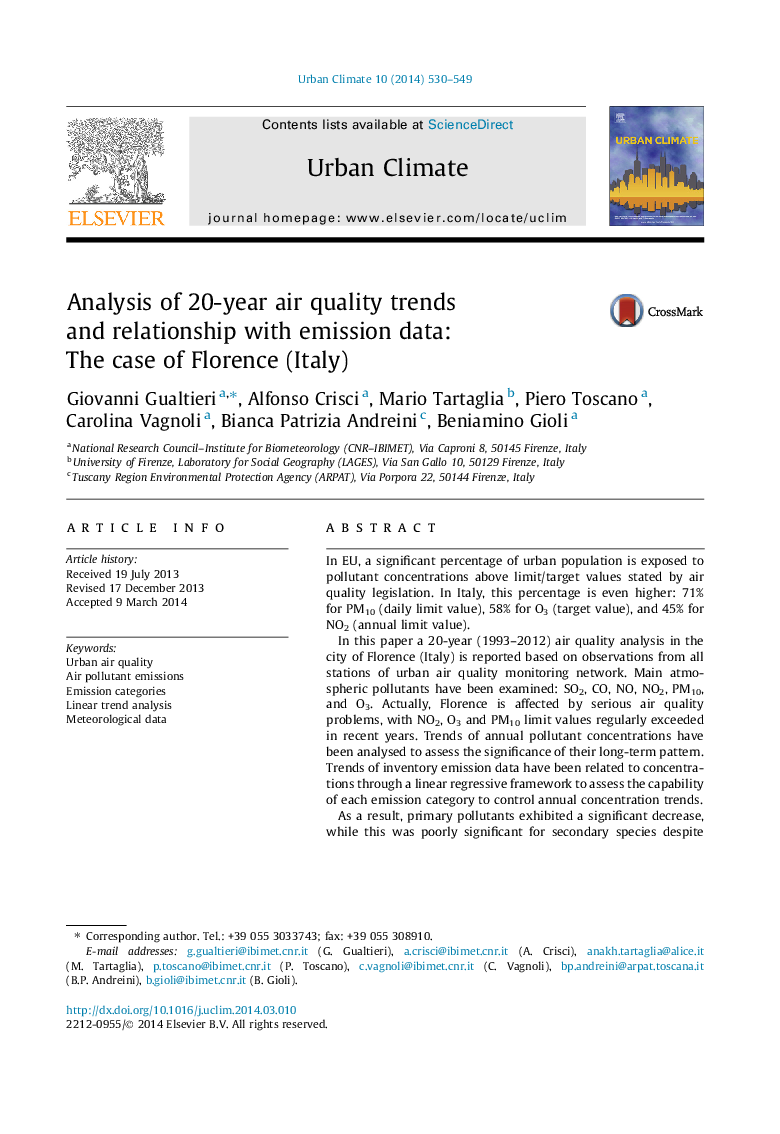| Article ID | Journal | Published Year | Pages | File Type |
|---|---|---|---|---|
| 143745 | Urban Climate | 2014 | 20 Pages |
•Primary species exhibit significant decrease due to relevant emissions reduction.•Secondary pollutants drop slightly despite reduction in precursors emissions.•A major role is played by strongly unfavourable meteorological conditions.•Vehicle fleet increase and variation over the years are also a key-factor.•Maintenance of long-term observational networks is crucial for urban air quality.
In EU, a significant percentage of urban population is exposed to pollutant concentrations above limit/target values stated by air quality legislation. In Italy, this percentage is even higher: 71% for PM10 (daily limit value), 58% for O3 (target value), and 45% for NO2 (annual limit value).In this paper a 20-year (1993–2012) air quality analysis in the city of Florence (Italy) is reported based on observations from all stations of urban air quality monitoring network. Main atmospheric pollutants have been examined: SO2, CO, NO, NO2, PM10, and O3. Actually, Florence is affected by serious air quality problems, with NO2, O3 and PM10 limit values regularly exceeded in recent years. Trends of annual pollutant concentrations have been analysed to assess the significance of their long-term pattern. Trends of inventory emission data have been related to concentrations through a linear regressive framework to assess the capability of each emission category to control annual concentration trends.As a result, primary pollutants exhibited a significant decrease, while this was poorly significant for secondary species despite remarkable reduction in their precursors emissions. A major role is played by meteorological conditions strongly unfavourable to pollutant dispersion, along with vehicle fleet increase and variation over the years.
